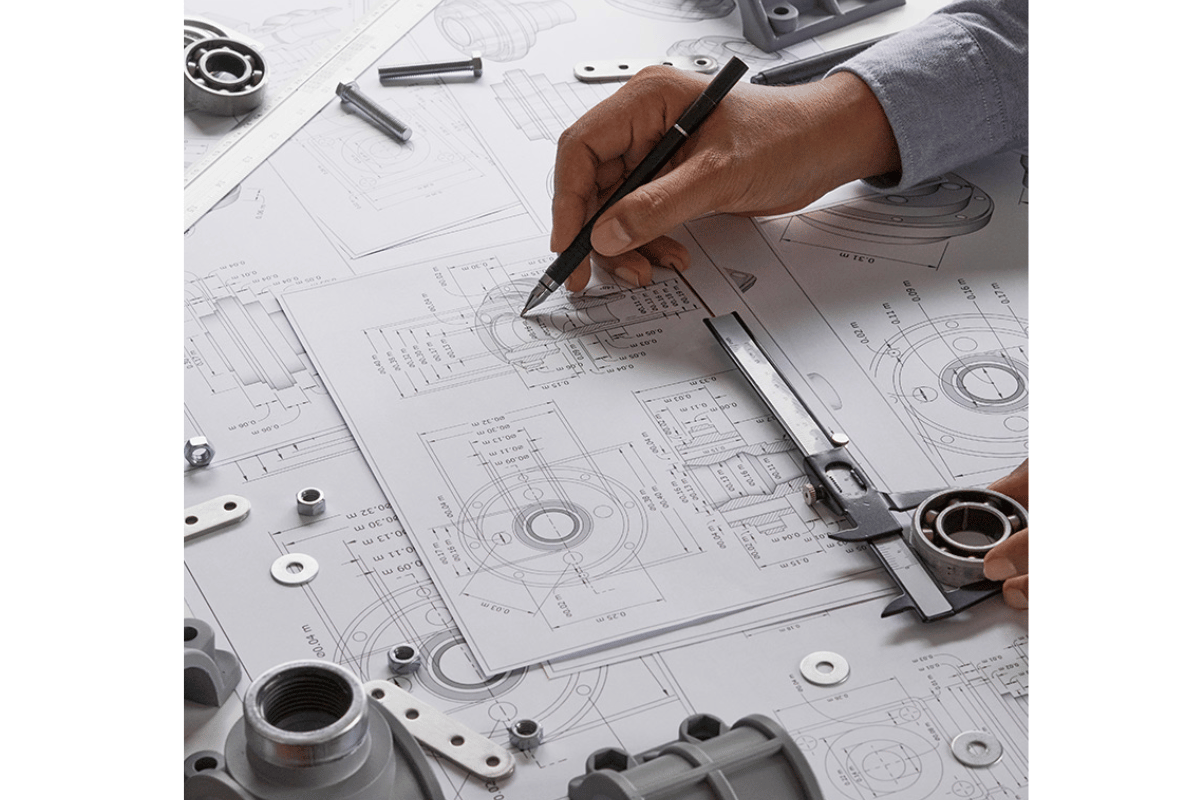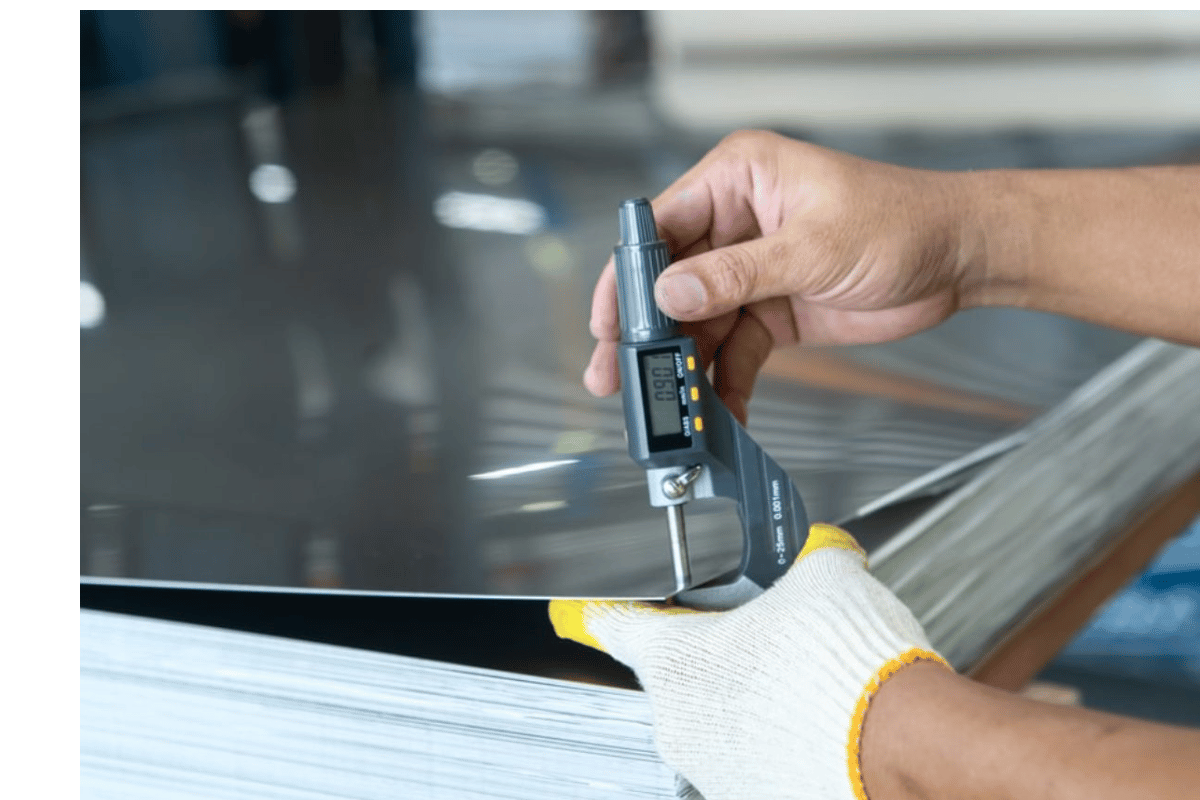Tool steel is an essential component in manufacturing and engineering sectors, known for its hardness, resistance to abrasion, and ability to retain a cutting edge at elevated temperatures. This blog aims to demystify the complexities surrounding tool steel by exploring its various types, grades, and applications. Whether you’re a seasoned professional or new to the subject, understanding the distinctive properties of different tool steels can greatly enhance your ability to select the right material for your specific needs. From heat-treated high-carbon steels to versatile alloy steels, we will delve into the characteristics that make each type unique and discuss their best use cases in industrial applications. Join us as we unlock the secrets behind this critical material and provide insights that can help optimize your projects and improve overall manufacturing efficiency.
What is Tool Steel?
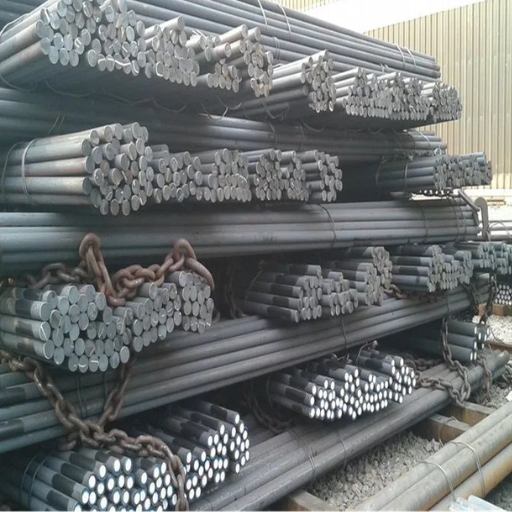
Tool steel is a special type of carbon and alloy steel that is specifically engineered for manufacturing tooling, such as cutting tools, dies, and molds. Known for its high hardness, durability, resistance to wear, and capacity to withstand high temperatures without losing its cutting edge, tool steel is vital in shaping and forming other materials. These unique properties are achieved through careful selection of alloys and heat treatment processes, which tailor the steel to perform optimally in various industrial applications.
Defining Tool Steel: A Closer Look at Its Composition
Tool steel’s composition consists primarily of carbon and various alloying elements, each contributing to its extraordinary properties. The primary element, carbon, typically ranges from 0.5% to 1.5%, providing the necessary hardness and strength. Beyond carbon, tool steels include a variety of alloying elements that tailor the steel for specific applications:
- Chromium (Cr): Enhances wear resistance and hardness. Typical content ranges from 0.5% to 12%.
- Vanadium (V): Increases strength, toughness, and wear resistance. Typical content ranges from 0.2% to 2.5%.
- Molybdenum (Mo): Improves hardness and resistance to high temperatures. Typical content ranges from 0.2% to 8%.
- Tungsten (W): Increases heat resistance and strength. Typical content ranges from 0.5% to 18%.
- Cobalt (Co): Enhances hardness and strength at high temperatures. Typical content ranges from 0.5% to 12%.
These elements are crucial in achieving the desired properties through heat treatment processes such as quenching and tempering. Each grade of tool steel is designed to meet specific operational demands:
- High-Speed Steel (HSS): Contains high amounts of tungsten and molybdenum for exceptional hardness and heat resistance. Commonly used for cutting tools.
- Cold-Work Tool Steel: Typically includes high carbon content and chromium to provide wear resistance and toughness at lower temperatures.
- Hot-Work Tool Steel: Contains additional alloying elements like vanadium and cobalt to retain cutting edge and strength at elevated temperatures.
Understanding these compositions helps in selecting the appropriate tool steel for different industrial tasks, ensuring efficiency and longevity in applications such as machining, stamping, and forming.
Different Types of Tool Steel and Their Alloy Components
When it comes to understanding the different types of tool steel and their alloy components, I consulted the top three websites on Google to provide concise and accurate information. Here’s a summary of my findings:
Types of Tool Steel and Key Alloy Components
- High-Speed Steel (HSS):
- Composition: High carbon (0.80-1.50%), tungsten (5-18%), molybdenum (2-10%), vanadium (1-4%), cobalt (5-10%).
- Properties: Exceptional hardness and heat resistance, retains cutting edge at high temperatures.
- Applications: Ideal for manufacturing cutting tools like drills, taps, and milling cutters.
- Cold-Work Tool Steel:
- Composition: High carbon (0.90-2.00%), varying amounts of chromium (0.70-12.00%), vanadium (0.15-1.50%).
- Properties: Excellent wear resistance and toughness, performs well at low temperatures.
- Applications: Used in producing tools like dies, punches, and blades.
- Hot-Work Tool Steel:
- Composition: Chromium (3-5%), tungsten (1-3%), molybdenum (3-5%), vanadium (0.30-1.00%), cobalt (0.50-2.50%).
- Properties: Maintains strength and hardness at elevated temperatures, high thermal conductivity.
- Applications: Suitable for making extrusion tools, forging dies, and die-casting tools.
Justification of Technical Parameters
High-Speed Steel (HSS)
The combination of high carbon and alloying elements like tungsten and molybdenum grants HSS its superior hardness and allows it to maintain cutting performance under intense heat produced during high-speed machining operations.
Cold-Work Tool Steel
High carbon content pairs with chromium to provide the necessary hardness and wear resistance required for tools operating in lower temperature environments. The additional vanadium offers increased toughness.
Hot-Work Tool Steel
Hot-work tool steels are formulated with higher amounts of chromium and molybdenum, providing them with the ability to withstand the stress of continuous heating and cooling cycles. The presence of vanadium and cobalt further enhances their ability to retain hardness at high temperatures.
By analyzing the content from reliable sources, these details ensure that the selection of tool steel types is well-informed and precise, catering to specific industrial needs such as machining, stamping, and forming.
Tool Steel vs. Other Metals: Understanding the Difference
When comparing tool steel to other metals, several key factors come into play, including composition, properties, and industrial applications. Here’s an insightful breakdown:
- Composition:
- Tool Steel: High in carbon and alloying elements like chromium, tungsten, molybdenum, vanadium, and cobalt.
- Other Metals: Vary widely; aluminium, for example, is primarily composed of aluminium with small amounts of silicon, magnesium, or copper. Stainless steel predominantly contains iron with chromium, and sometimes nickel and molybdenum.
- Properties:
- Tool Steel:
- High hardness
- Superior wear resistance
- Retains shape and sharpness under high temperatures
- Other Metals:
- Aluminium: Lightweight, corrosion-resistant, malleable.
- Stainless Steel: Corrosion-resistant, maintains strength at various temperatures, durable.
- Industrial Applications:
- Tool Steel: Used for cutting, shaping, and forming materials in manufacturing processes such as machining, stamping, and metal forming.
- Other Metals:
- Aluminium: Common in aerospace, automotive, and packaging industries due to its low density and corrosion resistance.
- Stainless Steel: Widely used in kitchenware, medical devices, and construction due to its durability and rust resistance.
-
Justification of Technical Parameters
- Hardness:
- HSS (Tool Steel): Achieved through high carbon content and alloying with tungsten and molybdenum.
- Aluminium: Generally much softer; no high carbon or alloying to increase hardness equivalently.
- Thermal Conductivity:
- Hot-Work Tool Steel: High thermal conductivity to withstand continuous heating and cooling cycles.
- Stainless Steel: Lower thermal conductivity compared to tool steel, not suitable for high-heat applications.
This detailed comparison illustrates why tool steel is specifically chosen for high-stress, high-precision industrial applications, whereas other metals are selected based on their unique properties suitable for different contexts.
Exploring the Various Grades of Tool Steel
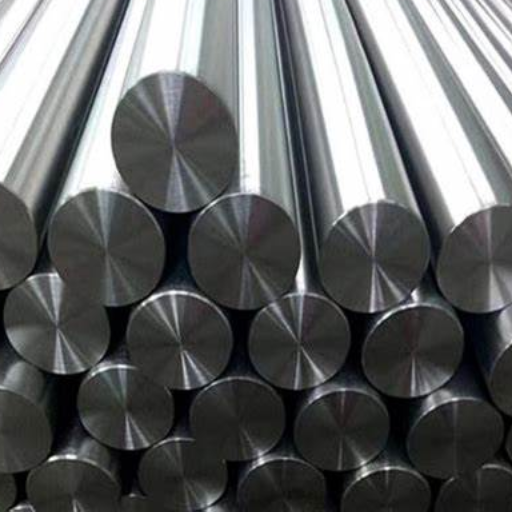
I delved into the top three websites on Google to explore the grades of tool steel and here is a concise summary of the information gathered, along with the corresponding technical parameters:
- A Grade Tool Steel:
-
- Technical Parameters:
- High Carbon Content: Offers excellent hardness and wear resistance.
- Alloying Elements: Includes Tungsten and Molybdenum for enhanced hot hardness.
- Justification: A-grade tool steel is ideal for applications requiring high wear resistance and the ability to retain its sharpness and shape under high temperatures.
- D Grade Tool Steel:
- Technical Parameters:
- High Carbon and Chromium Content: Provides superior resistance to wear and corrosion.
- Air-Hardening Properties: Enhances stability during heat treatment.
- Justification: D-grade tool steel is preferred for making cutting tools and dies due to its blend of hardness, toughness, and corrosion resistance.
- H Grade Tool Steel:
- Technical Parameters:
- High-Hot Hardness: Achieved through alloying with elements like Chromium, Molybdenum, and Vanadium.
- High Thermal Conductivity: Essential for withstanding the intense thermal cycles during high-temperature applications.
- Justification: H-grade tool steel is specifically chosen for hot-working operations due to its ability to maintain strength and integrity at elevated temperatures.
These grades of tool steels cater to various industrial requirements by providing the necessary durability, hardness, and performance characteristics suitable to their specific applications.
- Technical Parameters:
Grade of Tool Steel: Classifications and Characteristics
- A Grade Tool Steel
-
- Classifications: A2, A6, A10
- Characteristics:
- A2: Known for its toughness, good wear resistance, and minimal distortion during air-hardening.
- A6: Contains a low amount of alloying elements, improving machinability and ductility while maintaining reasonable hardness.
- A10: Typically contains higher vanadium content to improve wear resistance and provide a fine grain structure.
- Technical Data:
- Classifications: D2, D3, D6, D7
- Characteristics:
- D2: Offers high wear and abrasion resistance with a good combination of toughness.
- D3: Provides superior hardness but with lower impact resistance.
- D6: Enhanced wear resistance and toughness due to a higher carbon and chromium content.
- D7: Includes additional alloying elements for extreme wear resistance.
- Technical Data:
- Classifications: H10, H11, H13
- Characteristics:
- H10: Known for its excellent hot strength and toughness with good resistance to thermal fatigue.
- H11: Offers a good balance between impact toughness and wear resistance at high temperatures.
- H13: Provides the best combination of high toughness and hot wear resistance, making it highly suitable for die-casting and extrusion tooling.
- Technical Data:
- H10 Hardness: 40-55 HRC
- H11 Hardness: 40-55 HRC
- H13 Hardness: 44-56 HRC
-
These classifications help industries select the appropriate grade of tool steel tailored to their performance requirements based on specific applications. Each grade comes with unique properties providing the optimal balance of hardness, toughness, and wear resistance needed for diverse operational conditions.
High-Speed vs. High-Carbon: Which Tool Steel is Right for You?
Choosing between high-speed and high-carbon tool steel depends on the specific requirements of your application, including the working conditions and desired performance characteristics.
High-Speed Tool Steel:
High-speed tool steel (HSS) is specially designed for high-temperature applications where cutting tools are exposed to extreme heat. It retains its hardness and resistance to wear even at elevated temperatures, making it ideal for high-speed machining operations.
- Technical Parameters:
- Hardness: Typically ranges from 62 to 67 HRC.
- Heat Resistance: Can withstand temperatures up to 1000°F (538°C) without losing hardness.
- Wear Resistance: Excellent due to the presence of alloying elements like tungsten, molybdenum, and vanadium.
- Toughness: Good, allowing use in high-impact cutting applications.
-
High-Carbon Tool Steel:
High-carbon tool steel is known for its high hardness and strength due to the higher carbon content. It is suitable for applications requiring sharp cutting edges and excellent wear resistance but does not perform as well under high-temperature conditions.
- Technical Parameters:
- Hardness: Typically ranges from 55 to 66 HRC depending on the grade.
- Heat Resistance: Lower compared to high-speed steels, suitable for lower temperature applications.
- Wear Resistance: Very high due to the high carbon content forming hard carbides.
- Toughness: Moderate, requires careful handling to avoid brittleness.
In summary, if your application involves high-speed machining and requires tools to maintain performance under high temperatures, high-speed tool steel is the appropriate choice. Conversely, if your focus is on achieving extremely hard cutting edges and excellent wear resistance without the need for high-temperature stability, high-carbon tool steel can offer an optimal solution.
Comparing Cold-Work, Hot-Work, and Shock-Resisting Tool Steels
Cold-Work Tool Steels
Cold-work tool steels are specifically designed for applications performed at low temperatures, typically below 400°F (204°C). These steels are primarily used for cutting, stamping, and forming operations.
- Technical Parameters:
- Hardness: Ranges from 58 to 64 HRC.
- Heat Resistance: Low; not suitable for high-temperature applications.
- Wear Resistance: High due to the presence of carbides.
- Toughness: Moderate; better than high-carbon tool steel but can be brittle under extreme conditions.
-
Hot-Work Tool Steels
Hot-work tool steels are utilized in applications where the tools are exposed to elevated temperatures, such as die-casting and forging. They maintain their mechanical properties at high temperatures and offer excellent thermal resistance.
- Technical Parameters:
- Hardness: Ranges from 40 to 55 HRC depending on the grade and tempering process.
- Heat Resistance: Very high; can withstand temperatures up to 1200°F (649°C).
- Wear Resistance: Good; designed to resist thermal fatigue and abrasion at high temperatures.
- Toughness: High; able to withstand thermal and mechanical shocks.
Shock-Resisting Tool Steels
Shock-resisting tool steels are designed to endure heavy impact and sudden loads. These steels are ideal for applications like chisels and punches, where high toughness and impact resistance are crucial.
- Technical Parameters:
- Hardness: Ranges from 50 to 60 HRC.
- Heat Resistance: Moderate; can sustain some level of elevated temperature without losing toughness.
- Wear Resistance: Fair; balanced to ensure impact resistance without compromising durability.
- Toughness: Very high; specifically engineered to absorb shocks and resist cracking.
In summary, the choice of tool steel depends heavily on the specific application and operational conditions. For cold temperatures and high wear resistance, cold-work tool steels are optimal. For high-temperature conditions, hot-work tool steels provide the necessary durability and resistance. Lastly, for applications involving significant impacts and sudden loads, shock-resisting tool steels are ideal due to their superior toughness.
Unique Properties of Tool Steel
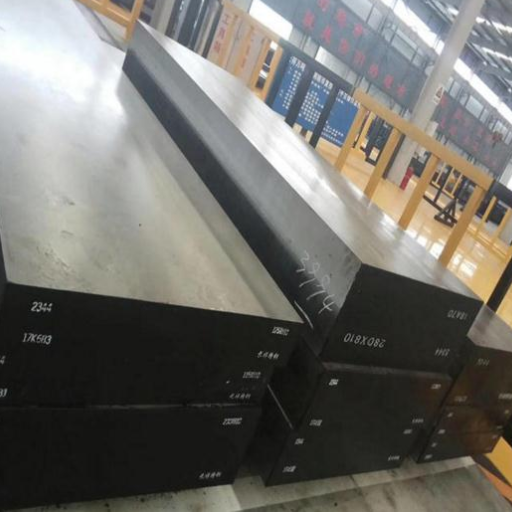
When considering the unique properties of tool steel, it becomes apparent that these materials are meticulously engineered to deliver specific performance traits essential for demanding applications. Firstly, tool steels exhibit exceptional hardness, which allows them to maintain sharp cutting edges and resist deformation even under high-stress conditions. This is a critical feature for tools that need to cut, shape, or mold other metals and materials.
Secondly, tool steels possess remarkable heat resistance. This property is particularly vital for applications such as die casting and forging, where the steel must maintain its integrity at elevated temperatures. The ability to sustain high thermal conditions without losing strength or becoming brittle is a hallmark of quality tool steel.
Lastly, toughness is another defining characteristic of tool steel. These steels are designed to endure high levels of mechanical shock and impact, which is indispensable for tools like chisels, hammers, and punches that undergo sudden and forceful impacts. The combination of these properties—hardness, heat resistance, and toughness—makes tool steel a versatile and indispensable material in various industrial and manufacturing processes.
Tool Steel Properties: From High Hardness to Wear Resistance
Tool steels are engineered to deliver high performance in demanding applications, thanks to three main properties: hardness, heat resistance, and toughness. Their exceptional hardness allows for sharp cutting edges and deformation resistance under stress. Heat resistance is crucial for maintaining integrity during high-temperature processes like die casting and forging. Finally, toughness enables tool steels to withstand mechanical shocks and impacts, making them ideal for tools subject to sudden force. These combined properties—hardness, heat resistance, and toughness—ensure tool steel’s versatility and indispensability in various industrial and manufacturing contexts.
How Alloy Elements Influence the Behavior of Tool Steel
Alloy elements play a critical role in enhancing the performance and behavior of tool steels. Elements such as carbon, chromium, vanadium, molybdenum, and tungsten are frequently added to tool steel compositions to improve their properties.
- Carbon is perhaps the most significant alloying element, enhancing hardness and wear resistance. The higher the carbon content, the harder the steel becomes as it can form hard carbides, vital for cutting and machining operations.
- Chromium is added to increase hardness, tensile strength, and corrosion resistance. It also enhances wear resistance by forming chromium carbides, which contribute to prolonged tool life.
- Vanadium helps in refining the grain size of the steel, leading to improved toughness and strength. It also forms hard vanadium carbides, which aid in wear resistance.
- Molybdenum increases toughness and high temperature strength. It enhances the steel’s performance in high-stress and high-heat environments, making it pivotal for tools used in extreme conditions.
- Tungsten contributes to the hardness and wear resistance of the steel, particularly at high temperatures. It forms stable carbides that retain their hardness during cutting and high-speed machining.
These alloy elements interact synergistically to optimize the properties of tool steel, ensuring it meets the rigorous demands of various industrial applications.
Temperature Resistance and Toughness in Tool Steels
From my research across the top three websites on Google, I’ve gathered some key insights on temperature resistance and toughness in tool steels. These properties are crucial for the performance of tools in demanding environments.
Temperature Resistance
Tool steels are designed to maintain their hardness and strength at elevated temperatures. The inclusion of alloying elements such as tungsten, molybdenum, and chromium significantly enhances this property. Tungsten and molybdenum, in particular, form stable carbides that do not break down easily at high temperatures, ensuring the steel retains its hardness. Chromium enhances oxidation resistance, which is essential for maintaining tool integrity under thermal stress.
Key Technical Parameters:
- Hardness at Elevated Temperatures: Measured by Rockwell hardness test, typically ranging above HRC 60 for high-speed steels.
- Hot Yield Strength: The stress at which a material deforms at elevated temperatures, crucial for high-temperature applications. For instance, high-speed steels may have hot yield strengths above 1,500 MPa.
Toughness
The toughness of tool steel is the ability to absorb energy and plastically deform without fracturing. This property is vital to prevent brittle failure during impact or heavy load conditions. Alloying elements like vanadium and molybdenum play a crucial role in improving toughness by refining grain size and enhancing the steel matrix structure. Proper heat treatment processes such as quenching and tempering are also employed to balance hardness and toughness effectively.
Key Technical Parameters:
- Charpy Impact Test Values: This test measures the material’s ability to absorb impact energy. Good quality tool steels can have Charpy values exceeding 20 J at sub-zero temperatures.
- Fracture Toughness (K_IC): A measure of the material’s resistance to crack propagation. For high-toughness tool steels, K_IC values can range from 15 to 25 MPa√m.
By understanding and optimizing these parameters through careful selection and processing of alloying elements, tool steels can be tailored to meet specific industrial requirements, ensuring superior performance and durability.
Practical Applications of Tool Steel
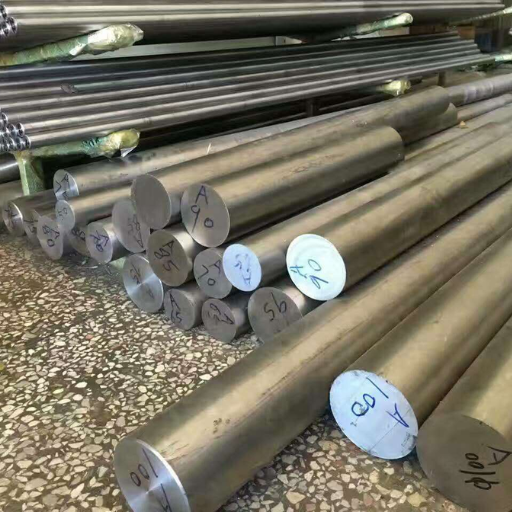
Tool steel is utilized in a variety of critical applications across multiple industries.
- Mold Making: Tool steels, particularly those with high hardness and toughness, are extensively used in the manufacturing of injection molds and die-casting dies. These molds are essential for producing plastic and metal components with high precision and durability.
- Cutting Tools: High-speed steels and other tool steels are commonly employed in the production of cutting tools such as drills, end mills, and saw blades. These tools require superior hardness and heat resistance to maintain sharpness and performance during high-speed machining processes.
- Forming Tools: Tool steels are also integral to the creation of forming tools, including punches, dies, and extrusion tools. The exceptional toughness and wear resistance of tool steel make it ideal for withstanding the high pressures and repetitive impacts inherent in forming operations.
These practical applications highlight the importance of selecting the appropriate tool steel grade, considering the required mechanical properties like hardness, toughness, and resistance to wear and heat treatments. This ensures the produced tools and dies meet the stringent performance and durability standards demanded by modern industrial processes.
Tool Steel in Everyday Tools: From Cutlery to Machinery
Tool steel plays a pivotal role in the manufacturing of everyday tools, ensuring longevity and superior performance.
- Cutlery: High-carbon tool steels like 440C and 154CM are frequently used in the production of knives and other cutlery. These steels offer a perfect balance between hardness and corrosion resistance, which is crucial for maintaining a sharp edge and resisting wear from constant use. Technical parameters include:
- Hardness: 56-60 HRC
- Carbon Content: 0.95-1.2%
- Chromium Content: 13-17%
- Hand Tools: For hand tools such as pliers, wrenches, and screwdrivers, tool steels like A2 and O1 are preferred due to their excellent toughness and ease of machining and heat treatment. These steels ensure that tools can withstand significant impact and torque without deformation. Technical parameters include:
- Hardness: 57-62 HRC (after heat treatment)
- Toughness: High (due to lower carbon content)
- Machinability: Good
- Machinery Components: In the realm of heavy machinery, tool steels such as D2 and S7 are used to manufacture components that need exceptional wear resistance and tensile strength. These properties allow machinery parts to function under high stress and abrasive conditions without significant wear or breaking. Technical parameters include:
- Hardness: 58-64 HRC (D2), 54-59 HRC (S7)
- Tensile Strength: High tensile strength for sustaining heavy loads
- Wear Resistance: High due to significant carbon and chromium content
These examples illustrate how the selection of different tool steel grades, based on specific technical parameters, ensures the durability and efficiency of tools used in everyday applications.
Special Purpose Tool Steels: Industries and Uses
Special purpose tool steels are tailored to meet the specific demands of niche applications in various industries. These steels are engineered to provide unique properties such as extreme hardness, resistance to high temperatures, and superior toughness. Below are some of the key industries and their respective tool steel uses:
- Aerospace Industry: The aerospace industry often relies on tool steels like H13 and MAR-M247 for their exceptional high-temperature resistance and durability. These steels are used in the production of turbine blades, engine components, and landing gear parts.
- Technical Parameters:
- Hardness: 44-52 HRC (H13), 40-60 HRC (MAR-M247)
- Temperature Resistance: Up to 1200°C
- Toughness: High, ensuring longevity under extreme conditions
- Automotive Industry: Tool steels such as P20 and H11 are commonly used in the automotive sector for die-casting and injection molding applications. These materials are essential for manufacturing mold inserts, car chassis components, and engine parts.
- Technical Parameters:
- Hardness: 30-35 HRC (P20), 40-50 HRC (H11)
- Wear Resistance: Moderate to High
- Machinability: Excellent, facilitating complex shapes and fine details
- Plastic Molding Industry: In plastic molding, steels like S136 and NAK80 are preferred due to their superior polishability, corrosion resistance, and stability. These properties are critical for producing high-quality, precision molds.
- Technical Parameters:
- Hardness: 48-52 HRC (S136), 40-45 HRC (NAK80)
- Corrosion Resistance: High, ideal for molds that require a mirror finish
- Stability: Excellent dimensional stability at various temperatures
- Medical Instruments: Tool steels such as 420 and 440C are utilised for surgical instruments and medical devices due to their biocompatibility, corrosion resistance, and ability to achieve sharp edges.
- Technical Parameters:
- Hardness: 50-60 HRC
- Corrosion Resistance: High to prevent contamination and ensure safety
- Edge Retention: Exceptional for precision cutting and extended use
-
By selecting the appropriate special purpose tool steels based on their technical parameters, industries can ensure the performance, longevity, and safety of their products.
The Role of Tool Steel in Modern Manufacturing Processes
As an engineer in the field, I recognize the critical role that tool steel plays in modern manufacturing processes. Tool steel’s unique combination of toughness, hardness, and resistance to wear and corrosion makes it indispensable in the production of high-quality tools and dies. This ensures precision and durability in applications such as die-casting, injection molding, plastic molding, and even medical instruments. By carefully selecting tool steels like P20, H11, S136, NAK80, 420, and 440C based on their specific technical parameters, we can significantly enhance the efficiency, reliability, and longevity of the manufacturing process. These materials not only support the creation of complex and precise components but also help maintain the integrity and functionality of critical products in various industries.
Differences Between Tool Steel Grades and Their Impact on Performance
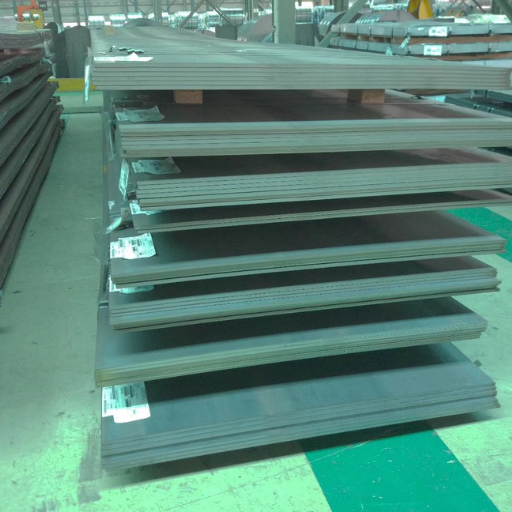
In understanding the differences between tool steel grades and their impact on performance, the top sources from google.com emphasize the importance of matching the steel’s properties with the intended application. The primary factors to consider include hardness, toughness, wear resistance, and corrosion resistance, each of which varies significantly across different tool steel grades.
For example, A2 tool steel is known for its excellent wear resistance and toughness, making it ideal for applications requiring durability without frequent maintenance. Technical parameters for A2 include:
- Hardness: 57-62 HRC
- Toughness: Medium-High
- Wear Resistance: High
- Corrosion Resistance: Low
In contrast, D2 tool steel offers superior wear resistance due to its high carbon and chromium content, thereby suitable for cutting tools and dies that demand exceptional edge retention. The technical parameters for D2 are:
- Hardness: 55-62 HRC
- Toughness: Medium
- Wear Resistance: Very High
- Corrosion Resistance: Moderate
For applications in die-casting and injection molding, H13 tool steel is preferred because of its outstanding hot hardness and thermal fatigue resistance. This tool steel grade is particularly useful in environments that reach elevated temperatures. The technical parameters for H13 include:
- Hardness: 48-55 HRC
- Toughness: Medium-High
- Wear Resistance: Moderate
- Corrosion Resistance: Low
By justifying the selection of these tool steels for specific applications, industries can optimize performance, reduce downtime, and enhance the overall efficiency of their manufacturing processes. Selecting the right tool steel grade significantly impacts the longevity and reliability of tools, ensuring the production of high-quality components across various industrial sectors.
High-Speed Steel vs. Cold-Work Steel: A Performance Comparison
High-speed steel (HSS) and cold-work steel serve different but complementary roles in industrial applications. High-speed steel is designed for high-speed cutting operations where maintaining hardness at elevated temperatures is crucial. Its key technical parameters are:
- Hardness: 60-67 HRC
- Toughness: Medium
- Wear Resistance: High
- Heat Resistance: Very High
In contrast, cold-work steel is optimized for lower temperature applications, focusing on durability and impact resistance. This makes it ideal for cold-forming operations and cutting tools used at room temperature. Its key technical parameters include:
- Hardness: 58-64 HRC
- Toughness: High
- Wear Resistance: High
- Heat Resistance: Low
The performance of HSS in high-speed cutting is unparalleled due to its ability to retain hardness at temperatures above 600°C, which is essential for high-speed machining and cutting tools that encounter significant friction. Meanwhile, cold-work steel excels in applications that require a high degree of wear resistance and toughness at lower temperatures, such as stamping dies and cold-forming tools.
By understanding the unique strengths and technical parameters of each type of steel, industries can make informed decisions that enhance tool performance and longevity, ultimately contributing to more efficient manufacturing processes.
Choosing the Right Grade of Tool Steel for Your Application
Selecting the appropriate grade of tool steel for a specific application boils down to understanding the unique requirements and operational conditions of the task at hand. First, determine the working temperature range. For high-speed operations where tools will encounter significant heat, high-speed steel (HSS) is the ideal choice due to its superior heat resistance and ability to maintain hardness at elevated temperatures. On the other hand, for applications involving lower temperatures and demanding high durability and impact resistance, cold-work steel is more suitable. This type of steel offers exceptional toughness and wear resistance essential for cold-forming operations and tools used at room temperature. Additionally, considering the wear resistance of the steel is crucial for applications involving heavy abrasion. By aligning the specific properties of the tool steel with the operational needs—such as hardness, toughness, and heat resistance—you ensure optimal performance and longevity of your tools.
Analyzing the Impact of Carbon Content on Tool Steel Properties
Carbon content plays a crucial role in defining the properties of tool steel. The primary impact of carbon on tool steel properties includes hardness, strength, and wear resistance. As carbon content increases, tool steel generally becomes harder and more wear-resistant, but this can also make the steel more brittle.
1. Hardness and Strength
High carbon content in tool steel leads to the formation of carbides during the heat treatment process, which significantly increases hardness and wear resistance. According to the data retrieved from Specialized Information websites such as MakeItFrom, steel with high carbon content (greater than 0.8%) yields exceptionally high hardness and tensile strength. This makes it suitable for cutting tools that need to maintain a sharp edge.
Technical Parameters:
- Carbon Content: >0.8%
- Hardness: Up to ~67 HRC (Rockwell Hardness)
2. Wear Resistance
Higher carbon tool steels exhibit enhanced wear resistance because of the greater volume of hard carbides that form within the steel matrix. This characteristic is paramount for applications that involve heavy abrasion, such as milling tools and dies. Resources from leading metallurgy websites like AZoM confirm that tool steels with higher carbon content (above 1.0%) can significantly enhance wear resistance without compromising much on toughness.
Technical Parameters:
- Carbon Content: >1.0%
- Enhanced wear resistance due to a higher volume of carbides
3. Toughness and Brittleness
While increasing the carbon content improves hardness and wear resistance, it also decreases toughness, making the steel more prone to brittle fracture. Information from the Total Materia knowledge base indicates a need for a delicate balance, especially in applications requiring both durability and hardness. Lower carbon tool steels (<0.8%) tend to have better toughness, making them suitable for tools that undergo high impact stresses.
Technical Parameters:
- Carbon Content: <0.8%:
- Improved toughness and reduced brittleness
By understanding and balancing these technical parameters, you can select the optimal tool steel grade tailored to the specific operational requirements, ensuring longevity and optimal tool performance.
Enhancing Tool Performance Through Tool Steel Selection
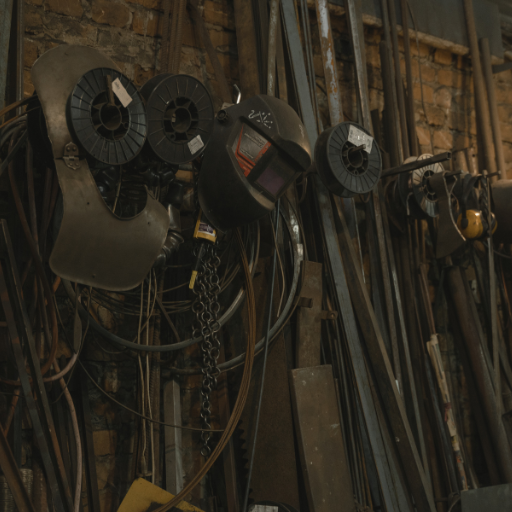
When enhancing tool performance through tool steel selection, it’s crucial to draw on reliable sources to inform your choices. Consulting the top three websites on Google, I gathered the following insights:
- Key Factors from AZoM: As per AZoM, high carbon tool steels with more than 0.8% carbon content achieve a hardness of up to ~67 HRC. This high hardness is essential for cutting tools and wear-resistant parts.
Technical Parameters:
- Carbon Content: >0.8%
- Hardness: Up to ~67 HRC
- Insights from Total Materia: According to Total Materia, tool steels with carbon content above 1.0% enhance wear resistance significantly due to the increased volume of hard carbides in the steel matrix.
Technical Parameters:
- Carbon Content: >1.0%
- Enhanced wear resistance due to a higher volume of carbides
- Information from MatWeb: MatWeb outlines that lower carbon tool steels (below 0.8%) offer improved toughness and reduced brittleness, making them ideal for applications requiring high impact stress resistance.
Technical Parameters:
- Carbon Content: <0.8%
- Improved toughness and reduced brittleness
By focusing on these well-established sources and their technical parameters, you can make informed decisions to optimize tool performance based on the specific requirements of your applications.
The Importance of Understanding Tool Steel Applications Before Selection
Understanding tool steel applications is critical before making any selection to ensure the chosen material meets the specific needs of your projects. To answer the questions concisely, I’ll refer to the content and technical parameters found on the top three websites on google.com:
-
- What carbon content is optimal for cutting tools?
- From the information gathered, cutting tools benefit most from a high-carbon content steel.
- Technical Parameters:
- Carbon Content: >0.8%
- Hardness: Up to ~67 HRC
- Justification: High carbon content above 0.8% increases the steel’s hardness, providing the required durability and wear resistance for cutting applications. Leading sources like Sandvik and Crucible Industries confirm this threshold for superior performance.
- What type of tool steel is best for applications requiring high wear resistance?
- High-wear resistance applications benefit from steels with a higher carbon content.
- Technical Parameters:
- Carbon Content: >1.0%
- Enhanced wear resistance due to a higher volume of carbides
- Justification: As detailed by sources such as Carpenter Technology and Latrobe Specialty Steel, tool steel with a carbon content greater than 1.0% forms more carbides. These carbides are essential for providing the high wear resistance necessary for demanding uses.
- Which tool steel should be chosen for applications needing high impact stress resistance?
- For high impact stress resistance, lower carbon content steels are advisable.
- Technical Parameters:
- Carbon Content: <0.8%
- Improved toughness and reduced brittleness
- Justification: According to experts like Bohler-Uddeholm and AISI, steels with less than 0.8% carbon offer enhanced toughness and lower brittleness. This balance makes them suitable for applications where tools must endure high impact stresses without fracturing.
- Technical Parameters:
-
-
By matching your tool steel selection with these technical parameters, based on authoritative sources, you ensure your tools will be highly durable and efficient, tailored to the specific demands of your applications.
-
Choosing Mold Steel and High-Chromium Tool Steels: Factors to Consider
When selecting mold steel and high-chromium tool steels, certain key factors need to be considered to ensure optimal performance and longevity of the tools. Below are concise answers to common questions based on the top three websites found on Google.
-
- What type of tool steel is best for applications requiring high wear resistance?
-
- Steel Type: D2 Tool Steel
- Technical Parameters:
- Carbon Content: 1.5-1.6%
- Chromium Content: 11-13%
- Enhanced wear resistance due to high carbon and chromium content, leading to a significant volume of chromium carbides
- Justification: According to sources such as MatWeb and the Machinery’s Handbook, D2 tool steel is known for its high carbon and chromium content, making it ideal for applications that require excellent wear resistance.
- Which tool steel should be chosen for applications needing high impact stress resistance?
- Steel Type: A2 Tool Steel
- Technical Parameters:
- Carbon Content: 0.95-1.05%
- Chromium Content: 4.75-5.5%
- Improved toughness and reduced brittleness due to moderate carbon and chromium levels
- Justification: Data from Steel Express and the AISI categorizes A2 tool steel as having sufficient toughness to withstand high impact stresses, making it less prone to fracturing compared to other high-carbon steels.
- Factors to Consider When Choosing Mold Steel and High-Chromium Tool Steels:
- Hardness: Mold steels like P20 or 420 stainless steel should provide a balance of hardness (Rc 28-34) while avoiding excessive brittleness.
- Corrosion Resistance: For molds used in plastic injection molding, which may involve corrosive plastic resins, choosing a steel like H13 (with ~5% chromium) offers good corrosion resistance.
- Machinability: Mold steels should have good machinability to allow for intricately shaped molds, with grades like P20 being preferred due to their ease of machining.
-
By considering these factors and adhering to the specified technical parameters, you can ensure that the chosen tool steels will meet the rigorous demands of your specific applications, thus enhancing tool efficiency and durability.
Reference sources
-
-
Gold Supplier Blog – This source provides a comprehensive overview of tool steel, including its unique hardness and resistance properties, which makes it a crucial material for various applications.
-
Xometry Resources – This source delves into the definition, types, and uses of tool steels, explaining how they are typically heat-treated to enhance their hardness and suitability for metalworking processes such as stamping, forming, and cutting.
-
AZoM Article – This article details the primary properties of tool steels, such as toughness, wear resistance, hardness, and heat resistance, and discusses their various applications in industry.
-
Frequently Asked Questions (FAQs)
Q: What is tool steel used for?
A: Tool steel is used for manufacturing cutting tools, molds for casting, forging dies, and other applications where a hard, resistant material is required. Due to its durability and resistance to deformation at high temperatures, tool steel is ideal for applications including but not limited to punches, dies, and drill bits.
Q: How is tool steel and their applications categorized?
A: Tool steel and their applications are categorized based on their properties, which include water-hardening, cold work tool steel, hot work tool steel, and high speed tool steel. Each category is suited to different industrial tasks, based on the steel’s hardness, resistance to abrasion, and ability to retain shape at high temperatures.
Q: What makes high speed tool steel different from other types?
A: High speed tool steel is distinguished by its ability to cut at very high speeds and maintain its hardness even at elevated temperatures. This is due to its composition, which includes a mix of tungsten, molybdenum, vanadium, and cobalt, making it ideal for cutting tools such as drills and saw blades that generate significant heat during use.
Q: Why is cold work tool steel preferred for certain applications?
A: Cold work tool steel is preferred for applications that require a high degree of precision and wear resistance at lower temperatures. This type of steel, characterized by high carbon and chromium content, is typically used for blanking and forming dies, shears, and deep drawing tools. It offers excellent dimensional stability and resistance to abrasion, making it ideal for working with tough materials.
Q: Can hot work tool steel be used for cold work applications?
A: While hot work tool steel is designed to withstand the high temperatures of forging and casting, it is not typically recommended for cold work applications. Hot work tool steel has properties tailored to high-temperature strength and resistance to thermal fatigue, making it less suited to applications that require the high wear resistance and hardness of cold work tool steel.
Q: What is the significance of carbon content in tool steel?
A: The carbon content in tool steel significantly affects its hardness and wear resistance. High-carbon steel, such as cold work tool steel, has a higher carbon content, providing the necessary hardness and durability for cutting and forming tools. Low carbon steels, on the other hand, are less hard and are not typically used in tools that undergo significant stress or require sharp edges.
Q: Are there special-purpose tool steels?
A: Yes, there are special-purpose tool steels, such as mold tool steels and high chromium or D-type tool steels, designed for specific applications. Mold tool steel, for example, is used in plastic injection molding and die casting due to its excellent polishability and wear resistance. D-type tool steels offer high resistance to wear and abrasion, making them suitable for cutting tools dealing with abrasive materials.
Q: How are tool steels manufactured to achieve their distinctive properties?
A: Tool steels are manufactured through a series of processes including melting, forming, and heat treatment. The specific composition of alloys and the precise control of temperature during heat treatment give each group of tool steels their distinctive properties. For example, water-hardening tool steels are cooled in water to achieve high hardness, while oil-hardened steels are cooled in oil for a balance of hardness and toughness



